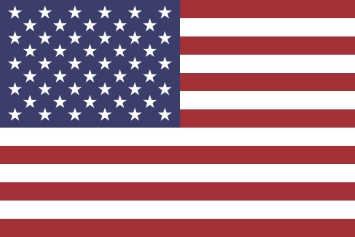March 25, 2022
Trends in On-Premise for No- and Low-Alcohol Beverages
On-premise channels are seeing a surge of no- and low- beverages as consumers return.
The past two years have not been easy for the on-premise alcohol segment in general, but things are looking up. According to an analysis of Nielsen data by Goldman Sachs Equity Research, non-alcoholic beverage sales volumes have been shifting back toward the on-premise channel, increasing 11.2% year-over-year during a two-week period including Labor Day weekend in 2021.
With the continued growth in the no- and low-alcohol segment, the beverage industry is seeing several key trends happening in on-premise channels that are bringing more and more consumers into the category.
On-premise channels refer to establishments that sell alcohol that is to be consumed on-site like bars, restaurants, hotels and wineries. This is versus off-premise, which refers to establishments that sell alcohol that is meant to be consumed off-site.
While the pandemic caused some blending of the two channels due to changes in local regulations, there have been a few trends in on-premise channels to keep an eye on. Many of these trends align with off-premise trends.
Consumers Are Drinking Less Alcohol
It’s no surprise that consumers are continuing to become more conscious about their overall health and wellness, and this has led to a decrease in overall alcohol consumption. However, whether they are sober, sober-curious or just want to reduce their alcohol intake, consumers still want to enjoy the experience of going out. With the increase in options, quality of drinks and lack of distinction in alcoholic and non-alcoholic drinks, the stigma some people have felt in ordering these no or low-alcohol drinks has decreased.
NielsenIQ data states that 78 percent of people buying non-alcoholic products are also buying alcoholic beer, wine and spirits. In on-premise scenarios, consumers may start off with alcoholic drinks in the beginning of their evening and then transition to non-alcoholic drinks toward the end, while still having a drink that appeals to them. Companies that can provide both options will be able to retain these customers and take advantage of this growing trend.
Increase in Options and Innovation
With the health and wellness trends, alcohol brands have been following suit by creating a variety of innovative products to meet the needs of the increasingly finicky consumer. On-premise locations have been catering to these trends by providing larger varieties of options on their menus. The low- and no- products can now offer a broad range of flavors and aromas resembling full alcohol beverages. Much of this is due to the innovation in equipment and processes used for dealcoholization, which has allowed for greater retention of flavor profiles. The same results are seen across beer, wine, cider, and spirits.
Many major alcohol brands see the potential in reaching the expanded consumer base, and they are making the investments to create products that can compete with the growing segment, thereby improving the overall quality of product within the segment.
These brands have also been updating their branding and product packaging to align more with the changing audience, without alienating those who prefer a low- or no-alcoholic beverage.
Diversity in Mixologist Recipes
Along with the increase in innovation, many bartenders and mixologists have adjusted their recipes to include more no- and low-alcohol options. They have expanded their menus to include specialty mixed drinks using ingredients like formulated bitters and syrups. The term “mocktail” has had a negative connotation in many social circles, but that stigma has been disappearing, along with even the term. New terms like “spirits-free drinks” or “no-proof drinks” are becoming more common. As Derek Brown, author, bar owner, and mixologist, states in his latest book, Mindful Mixology: A Comprehensive Guide to No- and Low-Alcohol Cocktails, “I want to normalize drinking sophisticated adult drinks without alcohol and that means avoiding ridiculous or confusing names. So, to me, they’re cocktails.” Mixologist Warren Bobrow has incorporated cannabis-infused beverages into his repertoire, as shown in his book, Cannabis Cocktails, Mocktails & Tonics: The Art of Spirited Drinks and Buzz-Worthy Libations.
Mixologists and bartenders have a larger responsibility as they educate their guests on the different low- and no- options available. Brands have an opportunity to be a part of this conversation in on-premise locations by providing ambassadors that can provide additional educational experiences.
Growth of ‘Dry’ On-Premise Options
Alcohol-free or zero-proof bars have been continuing to expand and are no longer just for those who are sober and looking for spaces to combat substance abuse. As Dry January has grown in popularity along with the sober-curious movement, many cities are seeing these non-alcoholic options increasing. The trend has had a mixed response, and often consumers will desire the ability to “switch” from alcohol to no alcohol therefore many alcohol-free spaces have begun to include a wider range of offerings and increase participation and revenues.
Increasing the Portfolio of Products
With no- and low-alcohol products having a big moment, we’ll continue to see on-premise channels follow the trends. Now is the time for brands to expand their product lineup to take advantage.
BevZero offers a full range of services and equipment that align with market conditions and cater to the specific needs of the clients. This includes end-to-end services including product development and supply services. For more information, contact BevZero.



